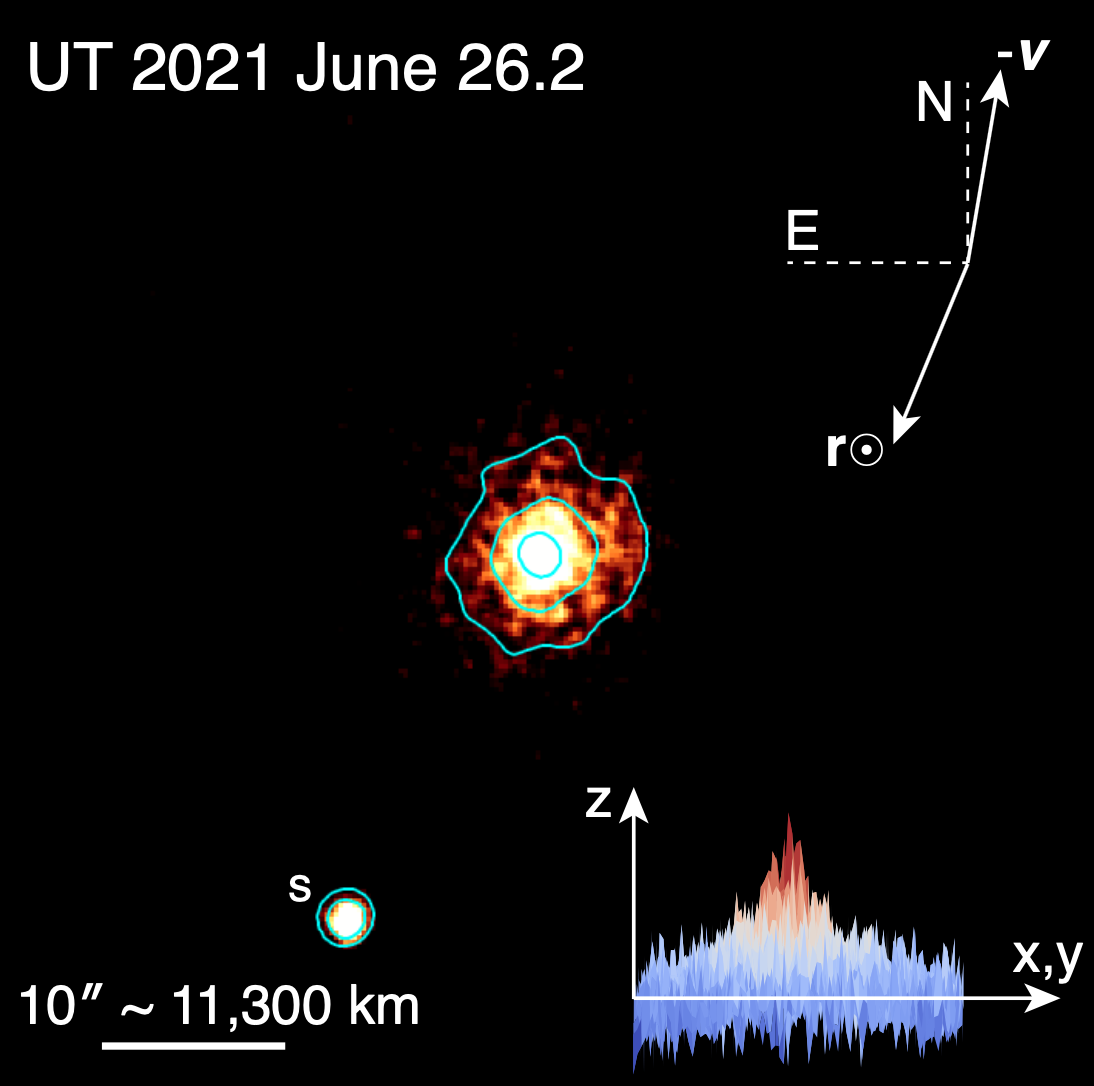Near-infrared spectropolarimetry of Oort-cloud comet C/2020 T2 (Palomar): Can polarimetry reflect any gradients in the Oort cloud?
- 1Institute of Geophysics and Extraterrestrial Physics, Technical University of Braunschweig, Germany (ynkwontop@gmail.com)
- 2Infrared Processing and Analysis Center, California Institute of Technology, USA
Among three fundamental properties of electromagnetic waves (intensity, frequency, and polarisation), polarimetry of cometary dust examines the last properties of scattered light by measuring the degree of linear polarisation (P) of the dust, which sensitively reflects its physical and compositional profiles. P-dependences of the dust on phase angle and wavelength often offer a convenient tool to diagnose the dust environment and thus compare the relative primitiveness of comet nuclei in various dynamical groups.
This presentation will report our new near-infrared (over the J and H bands) spectropolarimetric study of Oort-cloud comet C/2020 T2 (Palomar) using a newly commissioned low-resolution spectropolarimetry mode of the Wide-Field InfraRed Camera (WIRC) on the Hale Telescope at Palomar Observatory. We observed this comet (hereafter T2) at a phase angle of 28.5 deg around two weeks before perihelion in June 2021. T2 has a relatively far perihelion distance (~2 au) and low orbital inclination (~28 deg) compared to other well-studied bright Oort-cloud comets like C/1995 O1 (Hale-Bopp) and 1P/Halley. We found the coma morphology of our target is spherical and centrally condensed, without a detectable tail of small-sized dust particles along the anti-solar direction that is otherwise typical of the Oort-cloud comets around perihelion. We also noticed slightly different behaviours of T2 in the polarimetric colour and phase curve from those of other Oort-cloud comets observed at similar observing geometries. P shows excess at ~1.6 sigma level around 1.65 micrometres, a diagnostic wavelength of crystalline water ice, at the cometocentric distance of r = 845 km but vanishes in the outer coma at r = 1140 km.

To constrain the physical properties (particularly size and porosity) of T2's dust particles dominant in its coma, we first numerically simulated the light scattering of the dust using the radiative transfer with reciprocal transactions method (R2T2). The retrieved information was then incorporated into the dynamical modelling to reproduce the observed coma morphology of T2 at the observing epoch and thus provide a plausible range of dust characteristics of interest. Finally, we investigated a possible connection between the polarimetric and dynamical properties of Oort-cloud comets whose dust continuum has ever been observed in polarimetry. We discussed whether any gradients embedded in the Oort-cloud structure could be recognised by polarimetry (and vice versa) and which insights we learn for comet evolution from the resultant relationship between the two properties of the dust.
How to cite: Kwon, Y., Masiero, J., and Markkanen, J.: Near-infrared spectropolarimetry of Oort-cloud comet C/2020 T2 (Palomar): Can polarimetry reflect any gradients in the Oort cloud?, Europlanet Science Congress 2022, Granada, Spain, 18–23 Sep 2022, EPSC2022-190, https://doi.org/10.5194/epsc2022-190, 2022.

